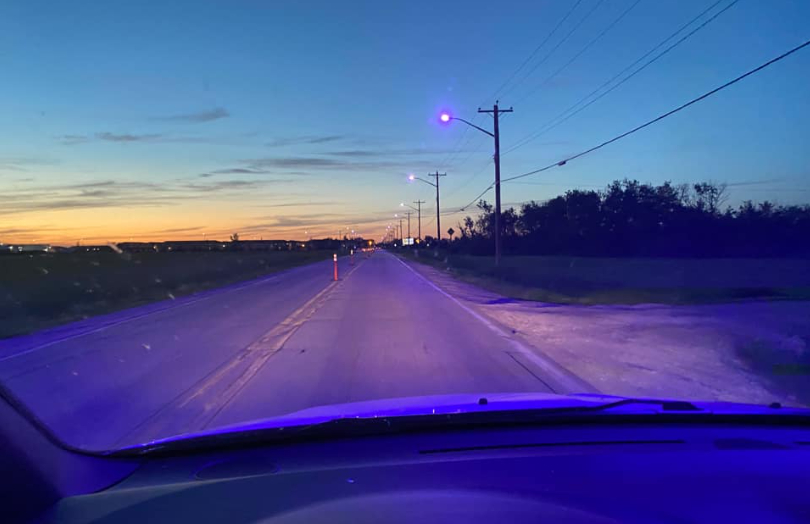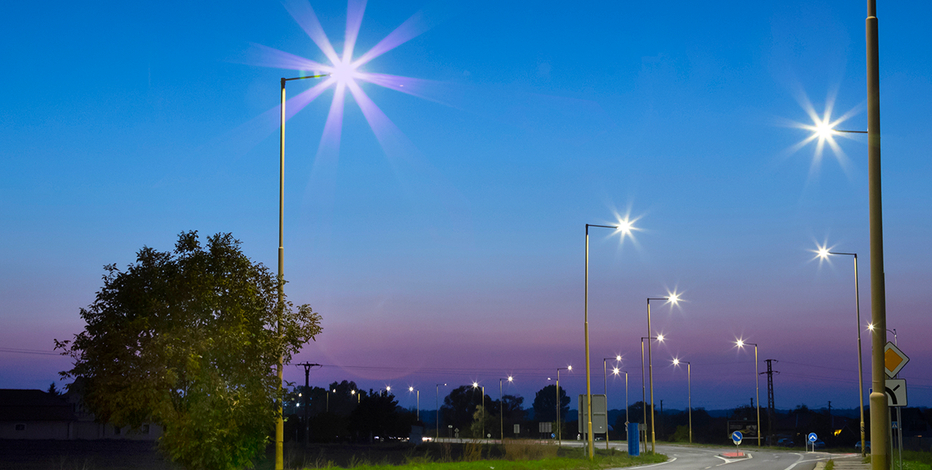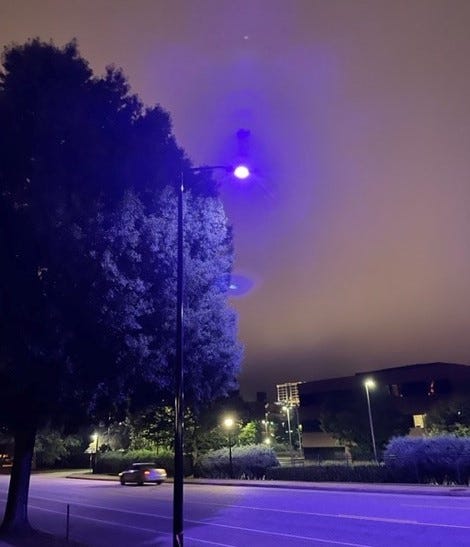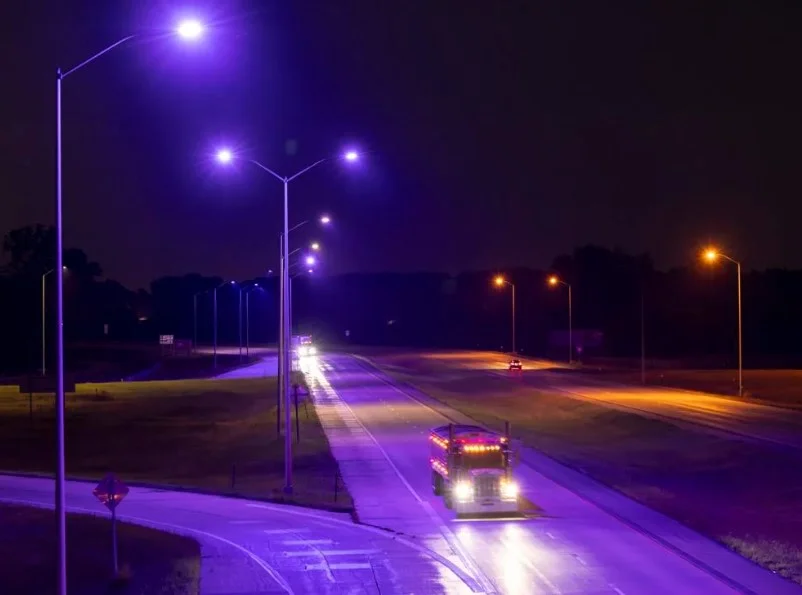Contents
1. The Phenomenon of Purple Street Lights
1.1 An Unexpected Glow: The Sudden Change in Street Lighting
why are street lights purple?In some cities and towns across the globe, residents have reported a strange phenomenon where traditional street lights emit a purple glow instead of the usual white or yellow light. This unusual occurrence has sparked curiosity and concern among communities, leading to questions about the cause and implications of this colorful anomaly. While purple street lights can appear to be a deliberate aesthetic choice, they are typically the result of manufacturing defects or malfunctions within the lighting system. The unexpected change can happen suddenly, transforming the familiar warm glow of street lights into an eerie and surreal purple landscape, catching both pedestrians and drivers off guard.
1.2 Misfires in Manufacturing: The LED Factor
The technological shift from traditional incandescent and sodium-vapor lighting to more energy-efficient LED (Light Emitting Diode) street lights has been a significant factor in the purple light mystery. LED lights are heralded for their lower energy consumption and longer lifespan, leading many municipalities to adopt them for street lighting. However, manufacturing issues can arise with LED lighting. A common cause of purple street lights is a malfunction in the LED phosphor coating, a crucial component in generating white light. If this coating is defective or degrades prematurely, it can result in a purple hue, as the blue LED light underneath dominates the color spectrum being emitted.

1.3 The Role of Environmental Factors
In some cases, environmental factors may contribute to the alteration of street light color. Extreme weather conditions, such as severe cold or heat, can negatively affect the performance of LED lights. why are street lights purple?The protective casing around the LEDs can be compromised, leading to exposure that affects the phosphor’s color-rendering ability. Corrosive elements like salt, often used for de-icing roads, can penetrate the street lights, further damaging the LED’s phosphor layer. This damage can prevent the LEDs from emitting their intended white light spectrum and instead cast a purple illumination onto the streets.
2. Assessing the Impact of Purple Street Lights
2.1 Safety Concerns and Visibility Issues
The sudden appearance of purple street lights raises several safety concerns for communities. The change in lighting color can affect drivers’ and pedestrians’ visibility. Potentially increasing the risk of accidents on the road, especially during nighttime. The purple hue can distort the appearance of objects, making it difficult for motorists to distinguish between colors, such as the brake lights of vehicles or traffic signals. Additionally, pedestrians may struggle to navigate their surroundings correctly, leading to compromised personal safety. These visibility issues underscore the importance of prompt action by local authorities to restore proper street lighting.

2.2 Effects on Human Health and Circadian Rhythms
Street lighting plays a crucial role in urban environments, and shifts in its color spectrum can impact human health. The color temperature and quality of light can influence circadian rhythms, the body’s natural sleep-wake cycle. While research is still emerging, prolonged exposure to unnatural lighting hues, including purple light, may disrupt these rhythms, potentially leading to sleep disturbances and other health issues. Cities with purple street lights may need to consider the broader health implications for their residents and make swift corrections to the lighting anomalies.
2.3 Public Reaction and Addressing Community Concerns
The unexpected shift to purple street lights often results in a wave of public reaction, ranging from curiosity to concern. Residents may question the safety, efficiency, and reasoning behind the color change. Prompting discussions on social media and community forums. To address these concerns, local governments and utility companies must communicate transparently about the cause of the issue and the steps being taken to rectify it. Timely and accurate information helps to alleviate fears and demonstrates responsiveness to community well-being. Additionally, public feedback can be a valuable tool for authorities to locate affected areas and prioritize maintenance efforts.

3. Solutions and Prevention Strategies
3.1 Immediate Remedies and Street Light Repairs
When purple street lights are reported, the immediate step is to repair or replace the defective lighting units. Utility companies are typically responsible for street light maintenance and should have protocols in place to address such issues efficiently. Quick identification and rectification can minimize disruption and safety risks, returning the lit environment to standard operating conditions. Contractors or municipal workers dispatched to fix the problem often begin with an inspection to confirm the defect before proceeding with appropriate actions. Such as replacing the light head or the entire fixture if necessary.
3.2 Long-Term Quality Control and LED Innovation
To avoid future occurrences of purple street lights, manufacturers and municipalities should focus on improving the quality control of LED lighting products. Strengthening the production process, enhancing the testing phases for durability and color accuracy. And conducting rigorous pre-installation inspections can reduce the likelihood of defects. In tandem with stringent quality control, continued innovation in LED technology can lead to enhancements in the materials used, the design of LED units,
and the manufacturing practices, ensuring better resilience against environmental stressors and overall longevity of the lighting systems. R&D efforts can aim at creating more reliable phosphor coatings that maintain their color-rendering properties despite variations in temperature or exposure to the elements.

3.3 Partnering with Professionals and Leveraging Warranties
To mitigate the impact of purple street lights and enhance the reliability of public lighting infrastructure. Municipalities can partner with reputable lighting professionals and manufacturers who stand behind their products with solid warranties and customer support. Establishing relationships with companies that provide not just quality products but also maintenance services can help cities respond quickly to any lighting issues. Warranties that cover premature failures, including color defects, ensure that repairs or replacements incur minimal cost to the community. And the responsible party is held accountable for delivering lighting solutions that meet the agreed-upon standards.

4. Understanding the Technology Behind LED Lighting
4.1 The Science of LED Color Rendering
To comprehend why LED lights may turn purple. It’s beneficial to understand the science behind how LEDs produce white light. White LEDs typically contain a blue LED chip coated with a yellow or red phosphor. Which converts a portion of the blue light into a spectrum that appears white to the human eye. Any inconsistencies or failures in this phosphor layer can result in a shift away from the intended white light, potentially generating a purple tint if the blue light is not properly balanced.
4.2 Advancements in Phosphor Application Techniques
LED technology has progressed significantly. With advancements in the way phosphor is applied to LED chips aiming to enhance color stability and longevity. Techniques such as conformal coating. Which provides a uniform phosphor layer, and remote phosphor designs. Where the phosphor is placed away from the LED chip to reduce heat exposure, are some of the methods developed to prevent color shifts, including the unwanted appearance of purple light.


